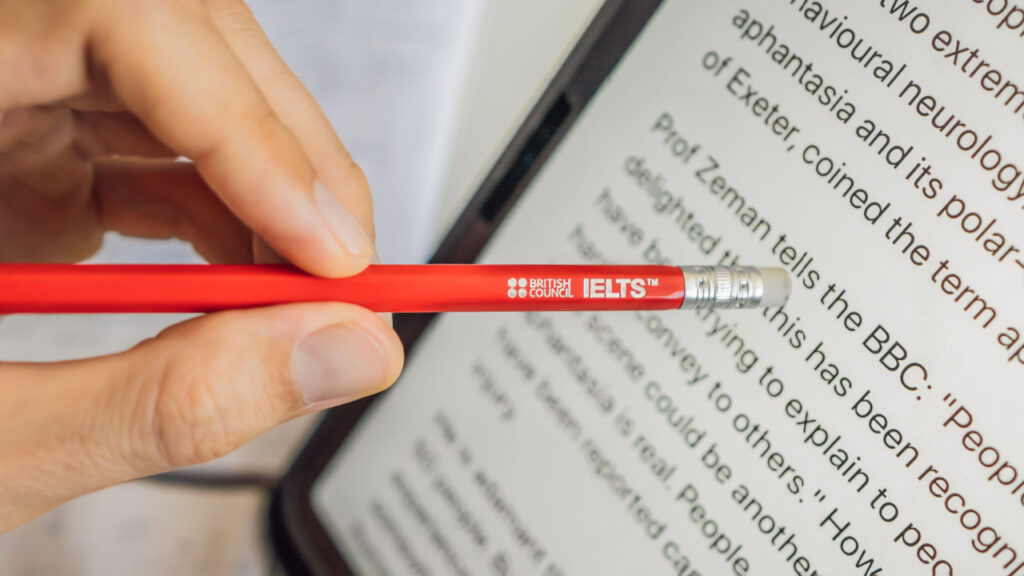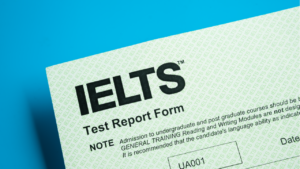For those preparing for the IELTS exam, practicing the most common IELTS reading passages can be a valuable exercise. By dedicating time and effort to practice, you can improve your reading comprehension skills and become better equipped to confidently approach various question types.
That’s where our blog post comes in – we’ll provide you with the Nutmeg A Valuable Spice reading passage – which covers a range of topics related to the history, cultivation, and uses of nutmeg. We’ll also discuss different types of questions and answers, such as multiple-choice, matching headings, and True/False/Not Given questions.
By the end of this blog post, you’ll have a comprehensive understanding of how to approach IELTS Reading questions related to the Nutmeg a valuable spice passage and feel more prepared for success on test day. So, let’s dive into the world of Nutmeg and take your skills to the next level!
Leap Advantage Virtual Spot Offer Event on May 10th 2024

Last call to secure your spot for Masters in STEM Program in the US for Fall ’24 exclusively for graduates and above.
Leap Advantage Virtual Spot Offer Event on May 10th 2024
Last call to secure your spot for Masters in STEM Program in the US for Fall ’24 exclusively for graduates and above.

Nutmeg A Valuable Spice: Question Types
The commonly asked questions related to the Nutmeg a valuable spice Reading passage are:
1. Short Answer Questions
Short Answer Questions in Nutmeg a valuable spice passage requires you to fill in missing information by finding keywords in the passage and relating them to the questions. Short answer questions are designed to test your ability to comprehend important information from the passage. It’s about getting the right information from the text. You must study a particular text and provide a one to three-word response to a series of questions.
Crack IELTS Exam in first attempt

Attend Leap’s free masterclass to get tips, tricks and advance strategies to crack IELTS exam in first attempt
Crack IELTS Exam in first attempt
Attend Leap’s free masterclass to get tips, tricks and advance strategies to crack IELTS exam in first attempt

How to Answer?
Always read the questions very carefully and identify the keywords. Think about synonyms or paraphrases for these keywords. Then, skim-read the text, but don’t read it in detail.
Now if you read the first lines of each paragraph you’ll get the main idea of the passage. With the help of keywords, scan the paragraphs in detail to find the exact answer. See that all these steps are completed in a short span of time. Short Answer questions are comparatively easier, so try to finish them soon and focus on other questions.
2. True/False/Not Given Questions
True/ False/ Not Given questions want you to analyze and interpret the viewpoints of the author in depth. If the given statement is consistent with the passage, select ‘True’; if it contradicts it, select ‘False’; if it is missing in the passage, select’ Not Given’.
How to Answer?
Firstly, skim through the passage and get a general idea of the content. Now read the statements carefully. Identify the main keywords in the statement that are relevant to the passage. With help of keywords look for the relevant information in the passage that relates to the statement.
Based on your understanding decide if the statement is true, false or not given according to the information in Nutmeg a valuable spice passage.
3. Table Completion Questions
The questions involve filling in a table by finding keywords in the passage and relating them to its content. This question type tests your ability to understand the main idea of the passage and identify specific information, such as facts, details, and examples.
How to Answer?
Read the instructions carefully. Next, read the questions, identify keywords and paraphrase them. Locate similar words in the passage by scanning quickly. Now study the text more carefully to establish the answer. Repeat the same for all other questions.

Nutmeg A Valuable Spice Reading Answers
- The nutmeg tree, Myristica fragrans, is a large evergreen tree native to Southeast Asia. Until the late 18th century, it only grew in one place in the world: a small group of islands in the Banda Sea, part of the Moluccas – or Spice Islands – in northeastern Indonesia. The tree is thickly branched with dense foliage of tough, dark green oval leaves, and produces small, yellow, bell-shaped flowers and pale yellow pear-shaped fruits. The fruit is encased in a flesh husk. When the fruit is ripe, this husk splits into two halves along a ridge running the length of the fruit. Inside is a purple-brown shiny seed, 2-3 cm long by about 2 cm across, surrounded by a lacy red or crimson covering called an ‘aril’. These are the sources of the two spices nutmeg and mace, the former being produced from the dried seed and the latter from the aril.
- Nutmeg was a costly ingredient in European cuisine in the Middle Ages, and was used as a flavouring, medicinal, and preservative agent. Throughout this period, the Arabs were the exclusive importers of the spice to Europe. They sold nutmeg for high prices to merchants based in Venice, but they never revealed the exact location of the source of this extremely valuable commodity. The Arab-Venetian dominance of the trade finally ended in 1512, when the Portuguese reached the Banda Islands and began exploiting its precious resources.
- Always in danger of competition from neighbouring Spain, the Portuguese began subcontracting their spice distribution to Dutch traders. Profits began to flow into the Netherlands, and the Dutch commercial fleet swiftly grew into one of the largest in the world. The Dutch quietly gained control of most of the shipping and trading of spices in Northern Europe. Then, in 1580, Portugal fell under Spanish rule, and by the end of the 16th century, the Dutch found themselves locked out of the market. As prices for pepper, nutmeg, and other spices soared across Europe, they decided to fight back.
- In 1602, Dutch merchants founded the VOC, a trading corporation better known as the Dutch East India Company. By 1617, the VOC was the richest commercial operation in the world. The company had 50,000 employees worldwide, with a private army of 30,000 men and a fleet of 200 ships. At the same time, thousands of people across Europe were dying of the plague, a highly contagious and deadly disease. Doctors were desperate for a way to stop the spread of this disease, and they decided nutmeg held the cure. Everybody wanted nutmeg, and many were willing to spare no expense to have it. Nutmeg bought for a few pennies in Indonesia could be sold for 68,000 times its original cost on the streets of London. The only problem was the short supply. And that’s where the Dutch found their opportunity.
- The Banda Islands were ruled by local sultans who insisted on maintaining a neutral trading policy towards foreign powers. This allowed them to avoid the presence of Portuguese or Spanish troops on their soil, but it also left them unprotected from other invaders. In 1621, the Dutch arrived and took over. Once securely in control of the Bandas, the Dutch went to work protecting their new investment. They concentrated all nutmeg production into a few easily guarded areas, uprooting and destroying any trees outside the plantation zones. Anyone caught growing a nutmeg seedling or carrying seeds without the proper authority was severely punished. In addition, all exported nutmeg was covered with lime to make sure there was no chance a fertile seed which could be grown elsewhere would leave the islands. There was only one obstacle to Dutch domination. One of the Banda Islands, a sliver of land called Run, only 3 km long by less than 1 km wide, was under the control of the British. After decades of fighting for control of this tiny island, the Dutch and British arrived at a compromise settlement, the Treaty of Breda, in 1667. Intent on securing their hold over every nutmeg-producing island, the Dutch offered a trade: if the British would give them the island of Run, they would in turn give Britain a distant and much less valuable island in North America. The British agreed. That other island was Manhattan, which is how New Amsterdam became New York. The Dutch now had a monopoly over the nutmeg trade which would last for another century.
- Then, in 1770, a Frenchman named Pierre Poivre successfully smuggled nutmeg plants to safety in Mauritius, an island off the coast of Africa. Some of these were later exported to the Caribbean where they thrived, especially on the island of Grenada. Next, in 1778, a volcanic eruption in the Banda region caused a tsunami that wiped out half the nutmeg groves. Finally, in 1809, the British returned to Indonesia and seized the Banda Islands by force. They returned the islands to the Dutch in 1817, but not before transplanting hundreds of nutmeg seedlings to plantations in several locations across southern Asia. The Dutch nutmeg monopoly was over.
- Today, nutmeg is grown in Indonesia, the Caribbean, India, Malaysia, Papua New Guinea and Sri Lanka, and world nutmeg production is estimated to average between 10,000 and 12,000 tonnes per year.
You should spend about 20 minutes on Questions 1-13 based on Nutmeg a valuable spice Passage 1 below.
Questions 1-4
Choose ONE WORD ONLY from the passage for each answer.
Write your answers in boxes 1-8 on your answer sheet.
The nutmeg tree and fruit
- the leaves of the tree are 1 ……………….. in shape
- the 2 ……………….. surrounds the fruit and breaks open when the fruit is ripe
- the 3 ……………….. is used to produce the spice nutmeg
- the covering known as the aril is used to produce 4 ………………..
- the tree has yellow flowers and fruit
Questions 5-7
Do the following statements agree with the information given in Nutmeg a valuable spice Reading Passage?
In boxes 5-7 on your answer sheet, write
TRUE if the statement agrees with the information
FALSE if the statement contradicts the information
NOT GIVEN if there is no information on this
5. In the Middle Ages, most Europeans knew where nutmeg was grown.
6. The VOC was the world’s first major trading company.
7. Following the Treaty of Breda, the Dutch had control of all the islands where nutmeg grew.
Questions 8-13
Complete the table below.
Choose ONE WORD ONLY from Nutmeg a valuable spice passage for each answer.
Write your answers in boxes 8-13 on your answer sheet.
| Middle Ages | Nutmeg was brought to Europe by the 8…….. |
| 16th century | European nations took control of the nutmeg trade |
| 17th Century | Demand for nutmeg grew, as it was believed to be effective against the disease known as the 9……………The Dutch– took control of the Banda Islands– restricted nutmeg production to a few areas– put 10…………… on nutmeg to avoid it being cultivated outside the islands– finally obtained the island of 11…………… from the British |
| Late 18th century | 1770 – nutmeg plants were secretly taken to 12……………1778 – half the Banda Islands’ nutmeg plantations were destroyed by a 13…………… |
Nutmeg A Valuable Spice Reading: Answers with Explanation
1. Oval
Explanation: (From lines 4-5) The tree is thickly branched with dense foliage of tough, dark green oval leaves, and produces small, yellow, bell-shaped flowers and pale yellow pear-shaped fruits, in paragraph 1, we can say that the leaves of Nutmeg trees are oval in shape.
2. Husk
Explanation: (From lines 6-7) The fruit is encased in a flesh husk. When the fruit is ripe, this husk splits into two halves along a ridge running the length of the fruit” in paragraph 1, refer to the words ‘encased’ and ‘splits’ that mean ‘surrounded by’ and ‘to break open’ respectively.
3. Seed
Explanation: (From Lines 8- 11 in paragraph 1) Inside is a purple-brown shiny seed, 2-3 cm long by about 2 cm across, surrounded by a lacy red or crimson covering called an ‘aril’. These are the sources of the two spices nutmeg and mace, the former being produced from the dried seed and the latter from the aril.
4. Mace
Explanation: (Lines 9-11) These are the sources of the two spices nutmeg and mace, the former being produced from the dried seed and the latter from the aril.” in paragraph 1, explains why the aril, or seed covering, denoted by the word ‘latter,’ is used to produce mace.
5. False
Explanation: (From lines 3-6) throughout this period, the Arabs were the exclusive importers of the spice to Europe. They sold nutmeg for high prices to merchants based in Venice, but they never revealed the exact location of the source of this extremely valuable commodity in Paragraph 2, the word ‘period’ refers to the Middle Ages, and the quoted lines imply that Europeans could not pinpoint the exact location of nutmegs.
6. Not Given
Explanation: The only conclusion that can be drawn from this is that the VOC was the richest commercial operation, but we don’t learn anything about it being the world’s first major trading company.
7. True
Explanation: (From lines 13-20 in paragraph 5) we can confirm that following the signing of the Treaty of Breda, the British handed over the islands to the Dutch, who had a monopoly over the areas where Nutmegs grew.
8. Arabs
Explanation: (Line 3) Throughout this period, the Arabs were the exclusive importers of the spice to Europe, paragraph 2 states that the Arabs exported spice to Europe during the Middle Ages.
9. Plague
Explanation: At the same time, thousands of people across Europe were dying of the plague, a highly contagious and deadly disease. Doctors were desperate for a way to stop the spread of this disease, and they decided nutmeg held the cure, paragraph 4 suggests that the disease cured by nutmeg was the plague.
10. Lime
Explanation: (Lines 9-11) In addition, all exported nutmeg was covered with lime to make sure there was no chance a fertile seed which could be grown elsewhere would leave the islands. Paragraph 5 proves that lime was applied to the nutmegs causing the seed to lose fertility and allowing the Dutch to prevent it from being cultivated outside the islands.
11. Run
Explanation: (Lines 15-18) Intent on securing their hold over every nutmeg-producing island, the Dutch offered a trade: if the British would give them the island of Run, they would, in turn, give Britain a distant and much less valuable island in North America in paragraph 5 show how the Dutch obtained the island of Run from the British via the Treaty of Breda.
12. Mauritius
Explanation: (Lines 1-2) In 1770, a Frenchman named Pierre Poivre successfully smuggled nutmeg plants to safety in Mauritius, an island off the coast of Africa. Paragraph 6 suggests that Pierre Poivre smuggled (stolen) nutmegs to Mauritius.
13. Tsunami
Explanation: (Lines 4-5) Next, in 1778, a volcanic eruption in the Banda region caused a tsunami that wiped out half the nutmeg groves. Paragraph 6 depicts how a volcanic eruption-caused tsunami destroyed (‘wiped out’) the Banda Islands’ nutmeg plantations.
Expert Tips to Improve Your Nutmeg A Valuable Spice Reading Answers
There are several strategies and techniques that you can use to improve your IELTS Reading skills. We are sharing tips designed by experienced IELTS trainers to help you maximize your potential and solve Nutmeg a valuable spice Reading passage.
1. Skim and Scan the Passage
Skim and scan are vital reading strategies that can help you quickly locate specific information in the Nutmeg passage.
Skim the Nutmeg a valuable spice Reading passage to get a general idea of the content, then scan for specific keywords related to the question. This will help you save time and identify relevant information.
2. Pay Attention to Synonyms and Paraphrasing
Nutmeg a valuable spice Reading passage may use synonyms or paraphrase key terms or phrases, which could make the question difficult to answer. For example, the passage might refer to nutmeg as “the spice of life” instead of using the word “nutmeg.”
Therefore, it is essential to understand the passage’s context and identify the meaning of unfamiliar words.
3. Focus on Details
Nutmeg a valuable spice passage may include specific details relevant to the question. Therefore, read the passage carefully and pay attention to small details, such as numbers, dates, and names, which could be essential to answering the question accurately.
4. Time Management
Time management is crucial for the IELTS Reading test. You have 60 minutes to answer 40 questions, which gives you an average of 1.5 minutes per question.
You must manage your time effectively and spend little time on any question. If you cannot figure out an answer, move on to the next question and return later if you have time.
5. Practice with Authentic Materials
Use authentic IELTS Reading materials, such as practice tests and sample questions, to prepare for the exam. This will help you track down your wrong answers and better understand the types of questions and the difficulty level you can expect in the test.
Also Read: IELTS Reading Score 7+: Preparation Strategy
IELTS Reading 2023: Valuable Tips to Improve Vocabulary and Score
To solve Nutmeg a valuable spice Reading passage and excel in the IELTS Reading section, you need to master the skills to read quickly, comprehend the main ideas presented in the passage and identify specific details.
Looking for a way to practice Reading samples under expert guidance?
Enroll in Leap Scholar’s IELTS courses and gain access to over 100 practice tests evaluated by India’s top IELTS trainers. With a variety of features including mock tests, live classes, speaking and writing evaluations, and extensive study materials, our courses provide you with everything you need to succeed.
Also check out our IELTS prep app that can be your constant guide and assistant throughout the preparation journey. You get access to all the resources, classes and evaluation by India’s most eligible IELTS trainers. Download the IELTS pre by LeapScholar.
Frequently Asked Questions
-
What should be my approach while practising the Nutmeg A Valuable Spice passage?
Improve your vocabulary and comprehension skills to understand the passage’s nuances better. You must focus on understanding the passage’s main idea and the author’s purpose. Practice identifying supporting details and examples that contribute to the author’s argument.
-
What skills do the IELTS Nutmeg A Valuable Spice passage analyse?
Nutmeg A Valuable Spice passage evaluates various skills, including reading comprehension, critical thinking, and analysis. It also tests your ability to identify and interpret supporting details, draw inferences, and understand the author’s tone and purpose.
Additionally, it assesses your vocabulary and grammar skills and ability to effectively communicate your understanding of the passage.
-
How do the IELTS experts evaluate the Nutmeg A Valuable Spice answers?
IELTS experts evaluate your answers based on your ability to identify the passage’s main idea accurately. They also look for your ability to effectively analyse and interpret supporting details and examples from the passage.
-
Can I use capital letters in my IELTS Reading answers?
Proper capitalisation is crucial in the Reading and Listening tests as the examiners may mark your answers as incorrect if they are not properly capitalised. Writing your answers in all capital letters may be a good strategy to avoid capitalisation errors.
-
Will retaking the IELTS test invalidate my previous exam results?No, both of your test results are valid for two years from the date you took the exam, and you can use either of them depending on your scores. However, you should never combine the results of multiple tests.
-
How can I manage my time effectively while solving Nutmeg a valuable spice passage?
To manage your time effectively, you should aim to spend no more than 20 minutes on each passage. Skim the passage quickly to get an idea of the main idea and structure, and then read the questions carefully before you start reading the passage in detail.






